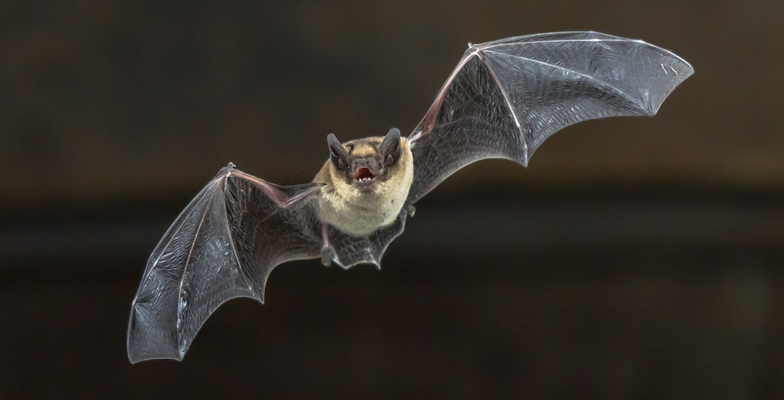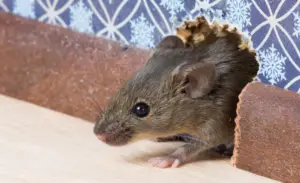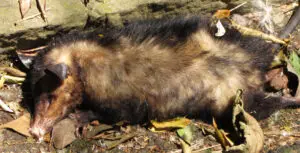Getting rid of bats as soon as possible is essential because this pest can cause serious health problems for your Family. Bat guano can carry dangerous pathogens like histoplasmosis, which attacks the lungs and causes serious illness. Bat colonies can also leave hazardous droppings and parasites, such as bat bugs that look like bed bugs. Bat bugs are an actual health risk and have been linked to diseases such as Ebola, Marburg, and Nipah in other areas of the world, but not really in Canada, just yet.
The WHO (World Health Organization) is doing a good job of tracking the viruses across the Globe.
How Do I Permanently Get Rid Of Bats?
One of the first steps to dealing with a bat infestation is understanding why they have made your home their new home. Although they can be challenging to end, there are ways to remove bats in your home permanently, and you should take steps to stop their attraction plants. You can also get expert advice from your bat removal specialists, ProTrap. The best way to permanently get rid of bats is to remove all food sources for them.
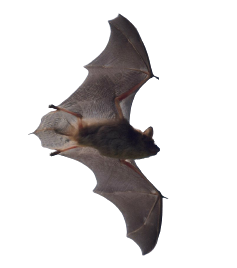
Getting rid of bats permanently is not a simple process. You can’t catch them quickly and force them to leave alone. Killing bats is illegal and rarely acceptable because they are helpful to the environment. Plus, bats tend to return to the same area yearly. This makes it all the more important to find out how to remove bats without harming them. If you’re facing a bat infestation, you should know that getting rid of bats can be tricky, even dangerous and look to hire a professional wildlife removal service.
Can You Get Rid Of Bats By Yourself?
Before trying to remove bats on your own, you must first understand their habits and needs. Although bats generally prefer to remain in the same area, they may migrate during different times of the year. You should delay the bat removal process until after the maternity season has ended. You may end up hurting the babies, which are still dependent on their parents to survive. Moreover, you may cause further damage to your house, or even health, if you fail to clean the droppings properly.
Fortunately, most bats live in caves. They use sound waves to locate their prey, so you should never approach them at night. If you see scattered bats, they may be migratory. However, they are foraging if you see a few flying around in your house. If you notice their droppings, you should avoid them. Bats produce ammonia-based guano, which can cause respiratory problems and other issues.
What Do Bats Hate?
When trying to keep bats out of your attic, the first thing you must do is to remove any source of moisture. Bats are attracted to dark areas, which can be a problem if you are in a humid climate. You can try using repellents such as neem oil or cinnamon powder. Bats also hate eucalyptus and peppermint. You can try spraying cinnamon powder a few times throughout your attic. Bats are frightened by solid and pungent smells and will stay away from such things as light bulbs.
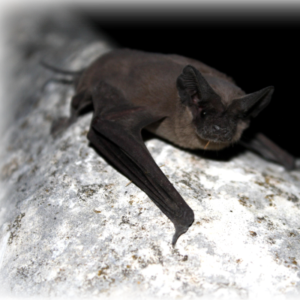
Unlike some animals, bats hate mothballs. They will not eat mothballs or any other type of rodent poison. Insects are one of the essential foods for bats, so don’t use mothballs around your home if you want to keep bats away. Alternatively, you can place a mothball outside your attic as a bat repellent.
How Do You Keep Bats Away?
The most recommended and reliable way to have bat control is to keep them out. Exclusion is the process of helping bats get out, but then blocking all entrances so they can’t come back in. How to get rid of them depends on where they are and how they are getting in. Besides doors that only lead out one way, you can use them at any time:
- Mesh Screens,
- Foam Enlargement
- PlyWood
Some people get rid of bats in other ways besides just keeping them out. The following methods are also used by some people:
- Build a bat house: A bat house is just a box made of wood that gives bats a safe place to nest during the day. They are put up on a tree, pole, or building. You can buy a bat house or find plans online to build your own. It’s important to remember that bat houses are good for the environment. and can attract bats, but they won’t work to get bats out of your house if they are already there. But they will keep bats safe near your property, so you can still help bats survive while giving them a new, safer place to live away from the parts of your home that people can get to.
- Ultrasonic Repellents: These devices, which you can buy, make a steady noise that is supposed to scare away many kinds of wildlife, including bats. They are put in places on your property where animals like to hang out or inside your home where bats like to nest.
- Natural Repellents: You can find scent pads, sprays, and other types of natural repellents online and in hardware stores. These can be used according to the instructions from the manufacturer, and they may work to keep bats away or get existing bats to leave. Even though many of them are made with natural ingredients, they may still be dangerous for people and animals to use.
- Install Flood or Flashing Lights: Sometimes you can get bats to leave their nests by putting a flashing light in your fireplace or attic. When trying to get rid of a bat colony, lights work best when combined with other methods. This keeps the colony from coming back when the lights go out.
- Raise the Temperature: Most bats like it to be between 70 and 90 degrees. If you put heaters in the area where bats live, you might be able to raise the temperature to 100 degrees or more, making the area unlivable. For this heat to work, it needs to stay at this level for a few days. Make sure that the heat won’t hurt anything, and keep heaters away from anything that could catch fire.
Suspect bats like to stay in the same place as possible. These are often more useful as preventative measures. They can also be used along with excluding bats to get them to leave.
Glue traps are another way to keep bats away and get rid of them. These are put in attics and other places where bats like to hang out. When a bat gets too close, strong glue holds it in place. These are not really good ideas though. Not only are they cruel because they make bats starve to death, but they also put any animal, including your pets, in danger if they touch them. Also, dead animals can spread smells horrible and diseases.
Can Bat Houses Attract Bats Fast?
If you find bats living on your property or in your home, you should get them out as soon as possible. What you can do is to have bat houses installed around your house or in your yard; it can help to attract bats fast. This is for your safety and to limit the damage they could do by building their nests inside your home.
To get rid of bats in a humane way, you have to wait for them to leave. A faster process is to consult pest control specialists for complete removal. To figure out how long the process will take, it is important to make sure it is done right. Bat-exclusion and bat extermination can solve your bat problem, whether you do it yourself or hire a professional from a pest control company or get a bat removal service, to get the job done right.
There are some ways to get bats to leave while the process is going on. Not all of them have been proven to work or are used by professionals, but you can add them to your DIY plan to get rid of bats if they won’t leave on their own. These include making your yard less appealing to bats, luring them away from your house, or building bat houses to get them to stay away from your house.
When getting rid of bats, you have to find a balance between getting rid of the nest quickly and making sure the bats are safe. It can be hard to deal with, and the fastest way to get it done is to hire a professional. They get rid of the need to try different things the first time someone takes out a bat.
Is Bat Guano Harmful To Humans?
When bats live in your house, they usually leave clues that help you figure out who they are. Bat guano, which is what bats leave behind, is a sign. Bat guano or bat droppings smell bad, but they’re also bad for your health and your home.
People can get sick from guano, and it can hurt the structure of your house. Because bats can spread rabies, we usually think of them as dangerous. Even though it is not as well known, bat guano also poses health risks. For one thing, it sends pathogens into the air that can spread histoplasmosis, a dangerous lung infection. As guano breaks down, it lets out pathogens that are bad for your health.
If you breathe in these spores, you could get histoplasmosis. Histoplasmosis is an infection of the lungs that is spread through the air. It can cause a lot of different symptoms, such as a mild cough, headache, trouble breathing, fever, chest pain, or even blurred vision. Histoplasmosis doesn’t kill a lot of people, but it can be dangerous for people whose immune systems are weak. That’s why it’s important to keep yourself safe by knowing how to rid of the bat poop correctly.
Also, the spores in bat guano can travel through the air. The ventilation system in your home may make it easy for these spores to spread.
Is There A Bat Infestation In Your Home?
Bats aren’t as dangerous and don’t pose as many health risks as some other pests. Still, their droppings can make breathing hard for people who are are older or have a compromised immune system, and they can damage your home or business.
Look for the following signs to find out as soon as possible if there are bats in your home, or living in your attic.
Bats move around in the dark and talk to each other by squeaking and chirping at high pitches. Most of the time, you can’t hear this noise by itself, and if it’s not very loud, it’s probably just one or two bats flying by. But squeaking that is loud and keeps happening could be a sign of an infestation.
Another kind of sound that tells you there are bats around. At first, these sounds sound like a problem with rats. Listen carefully if you hear strange scratching and moving around, especially at dusk and dawn. Between these sounds, you can hear bats flapping their wings.
Bat guano is a clear sign that there are too many bats in an area. Check for droppings near the attic or near places where animals can get in from the outside, like window sills, decks, and the roof. The pile of guano smells like ammonia.
Scratches on their own can be a sign of another type of pest, like rats. But watch out for scratches in places like the attic and walls that are higher up. Most likely, bats are to blame for the damage.
Grease marks are another thing to look out for in places that are hard to reach. Most bats have a layer of grease on their fur. Bats are probably the cause of brown or black stains near your attic, roof, or any holes in the upper parts of your building. You can get rid of these stains, but the area needs to be sterilized first.
To avoid health risks and property damage as soon as possible, it is important to find a bat infestation as soon as possible. When you see several of these signs, you should call a professional exterminator or use other ways to get rid of bats.
What Home Remedy Gets Rid of Bats?
Using essential oils is an option. Peppermint, cloves, and cinnamon are popular scents. These oils are effective bat repellents but must be applied often to have lasting effects. Moreover, the smell of these essential oils may be unpleasant for humans, so you will need to reapply them regularly to keep bats away. However, don’t get too thrilled just yet.
Another home remedy for bats is phenol. This chemical, common in medical supplies, has a mild odor. Although it is unpleasant to humans, bats find it unbearable and won’t hang around it for long. Also, bats have a keen sense of smell, so as their bat urine, so keeping them away from humans and their homes is essential. During the day, they prefer caves and will take up any dark space in your home. Infested areas can include chimneys, attics, walls, and roof eaves.
You need to determine where the bats are. Do they live in an attic or a cave? If you suspect your home is the preferred habitat for bats, you should make it as dark and damp as possible. If you can’t find the bats, try to seal up the previous room and work your way to the door. Then, use a vacuum cleaner to clean up the bat poop. Never touch it with your bare hands.
When Should You Try To Get Rid Of Bats?
Although there are a few exceptions, it is generally better to exterminate bats at other times. Bats are most vulnerable during spring and early summer when they search for insects to breed. They are not as prone to starvation as they are in the fall when they are young and ready to fly. Besides, if bats are present in your home, they can cause considerable damage.
The best time to get rid of bats is at night, when their activity is likely highest. Since bats have more sensitive noses than other types of pests, they should be scared away by the scent of certain natural products. Eucalyptus, peppermint, mint, cinnamon, and eucalyptus oils are popular scents. Consider using a natural product if you cannot afford to hire a professional to exterminate bats.
Once you find the source of the problem, the next step is to seal the entry point. You can do this by using a one-way exit valve, which lets bats go out but prevents them from coming back in. Make sure to leave the one-way exit valve in place for three days. After that, you can cross out bats from your home without hassles.
Will Bright Lights Keep Bats Away?
While some bat species do not eat insects, they will feed on fruit, flowers, and pollen. Others will even eat rodents, frogs, and even their own kind. Many bat researchers have concluded that the attraction to bright lights is simply a mystery. But often, the rays simply irritate the bats’ eyes. If your home has bright lights, dim them if you wish to prevent bats from feeding there.
Despite their fear of humans, bats are highly contagious. Their saliva, urine, and feces are highly infectious. Unlike humans, bats are also susceptible to light and smell. So if you want to keep bats away, try turning off porch and garden lights. However, beware of the potential health risks of bats – they can carry diseases such as Ebola and Zika.
Some bat repellent bats devices are designed to scare bats away. However, these devices are costly. If they are effective is a different matter entirely. While they will keep bats from roosting in your home, you will probably not get rid of the bat colony unless you remove the bats and replace the lights with new ones. And remember to use caution when installing new lights. The reason is simple: bats prefer dark places.
Do Bats Bite Humans While Sleeping?
Bats have small, sharp teeth, so you may get a bat bite while sleeping. The bite may be small, like a pinprick, and not immediately noticeable. The bite will usually leave a scratch about a cm long. It can hurt, but it’s unlikely to break your skin. Nevertheless, you should always get medical help if you suspect you’ve been bitten.
You’ve probably wondered if you’ve ever been bitten by a bat while sleeping. It’s common for bats to fly around your bedroom in the evenings. You may even notice some of them landing on your furniture or curtains. However, if you see them sneezing, they’re unlikely to bite you if you see them sneezing. This is not unusual for bats, which generally fly in a U-shaped pattern, high near the wall and low in the middle of the room.
In addition to being a nocturnal creature, bats and bat droppings can cause injury to humans only under certain conditions. If a bat is threatened or handled aggressively, it may bite you. Bats can be dangerous, but they won’t intentionally hurt you. Most bat bites, bat urine and bat droppings have occurred because of humans picking up the bat or getting too close to a pup.
Do Bats Return To The Same Place?
If you remove bats from a property, they are likely to return – and repopulate – the area. This is because bats like to stick to routine activities. They would likely have a baby yearly if they were to stay in the same house. That may seem cruel and unfair, but bats don’t give up so easily. Here are a few reasons they may return to the same place after you got rid of them.
First, it’s important to remember that displaced bat colonies will continue to search for places to roost. The best way to avoid this is to install a bat roosting box to prevent bat droppings. These boxes are made for bats and mimic their existing roost as closely as possible. If you don’t install a roosting bat box on your property, the bats will continue to use your property as their favorite roost.
Getting the Help You Need for Bat Removal:
If you discover any of these signs and suspect a bat infestation in your home contact your Pro Trap team to safely remove the bats and repair the areas damaged by the group.
We will also repair the points of entry to prevent them from coming back into your home and advise you on any necessary next steps.
